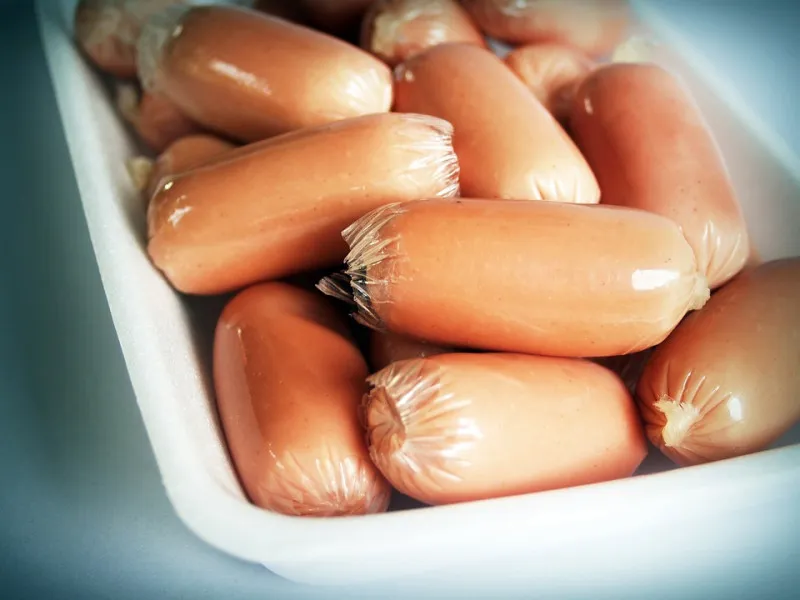From January 1st to December 26th, 2021 (January-October EAEU data), Russia exported sausages at the amount of 109 mln US dollars, which is by 36% higher than in the same period of 2020. The shipments measured by volume increased by 27% to 48 ths tonnes.

The number of the countries buying Russian sausages rose to 47 in 2021 with the sales geography significantly expanded with a considerable contribution coming from the African countries. 86 tonnes were shipped to Benin, 39 tonnes to the Democratic Republic of Congo, 25 tonnes to Liberia, 6 tonnes to Ghana, 5 tonnes to the Republic of Congo and Guinea, 3 tonnes to Angola and Gabon.
Nevertheless, the largest buyers are still the CIS countries – Kazakhstan, Ukraine, Azerbaijan, Abkhazia and Kyrgyzstan. In January-October (the latest available data on shipments to EAEU countries), the shipments to Kazakhstan increased by 23% to 33,000 tonnes in volume terms, and by 30% to 67 mln US dollars in value terms. In 2021, Ukraine increased its import volume to 7.8 ths tonnes (+36%) by 21 mln US dollars (+52%). 4.2 ths tonnes (+20%) at the amount of 10 mln US dollars (+19%) were exported to Azerbaijan.
The foreign countries that imported the largest volumes of Russian sausages were Vietnam (28 tonnes at the amount of 240,000 US dollars), Mongolia (13 tonnes at the amount of 61,000 US dollars) and Japan (12 tonnes at the amount of 57,000 US dollars).
In the context of the global pandemic and the restrictions in the work of the HoReCa sector, the demand for sausages as affordable and time saving products significantly increased, according to Ekaterina Luchkina, CEO of the National Union of Meat Processors. In her opinion, the highest volume of products is exported to CIS countries. “Russian products are in demand in those countries because they share with Russia a common history, taste preferences and consumption traditions, including sausages,” Luchkina said.
At the same time, constant efforts are being made in order to expand the export supply geography, including South-East Asia and Africa. “The export volume to foreign markets is still relatively low due to the low consumption of sausages in those countries. For example, the Russian producers export small volumes of sausages to Japan. This country’s market is relatively tight but due to the Western lifestyle trend development, sausages gained a specific niche in that market,” Luchkina added.
Global Market
The urbanization and the growth in demand for prepared foods lead to the stable increase in the volumes of the global market and the international sausage trade. According to ITC Trade Map, in 2020, the global import volume of sausages was 1.3 mln tones at the amount of 5.4 billion US dollars, while over the past 4 years the actual value increased by 28%.
The largest importers of sausages in 2020 were Germany (710 mln USD), UK (681 mln USD) and France (385 mln USD). The leading global market suppliers were Germany (858 mln USD), Italy (632 mln USD) and USA (580 mln USD). Russia, according to ITC Trade Map, was in top 15 of the exporters in 2020 with the share of 1.6%.
Outlook for Russia
Ekaterina Luchkina believes that Russia has a good potential to increase the export volumes of Russian sausages to the global market. For example, the Russian exporters are currently arranging supplies to Tajikistan and Hong Kong. “However, let’s not forget that many countries worship Islam, and the traditional for our market sausages will not be in demand there. In this regard, many Russian companies began to develop new product lines: “Cherkizovo” company for example created a pork-free sausage line for export to CIS countries with Muslim population, such as Kazakhstan, Kyrgyzstan, etc.,” Luchkina said. The exporters also note that cheaper products are currently in a higher demand. However, Luchkina believes that the growing income of the population in the importing countries will lead to significant changes in the demand and consumer preferences.
In 2021, “Damate” Group for example started exporting sausages made of turkey meat following the launch of a deep processing plant in Penza region. “According to the year-end reviews, our company exported around 300 tonnes of deep processed products to 15 countries, mainly CIS countries, as well as to West and East Africa,” Rashid Hairov, CEO of “Damate” said in an interview. “Our company focuses on the export of deep processed products, and the organization of this export is a very special process. It requires a development of certain positions and various supply channels, and the organoleptic, logistic and functional components of each channel should be taken into account. The sales to foreign countries, however, are quite different from the export to CIS countries and EAEU we are used to. We already launched an export of our products with quite broad geography. We also plan to build a reliable and effective supply and sales channel,“ Hairov added. “Damate” intends to start exporting their products to ASEAN and Middle Eastern countries in 2022. Besides their top products, the company gradually introduces new products which are hard to replace, even if there is a competitor with a similar product.
© Inline LLC 2015-2026. Privacy Policy | Terms of Service